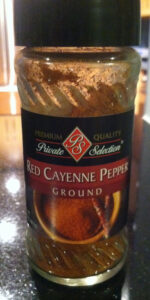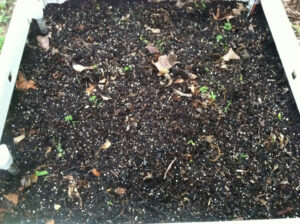
I may have mentioned this before, but my yard has a LOT of squirrels. With several oak and pecan trees, there is plenty of food for them. The problem is, whenever I plant new seeds, the squirrels (and cats) dig up the soil. I end up with empty spots that never grow.
I planted beets and carrots in my two raised self-watering beds. The soil in these containers is excellent, making it great for root vegetables. Usually the squirrels and cats would have several holes dug in it by the next day. This time, I decided to try an experiment.
Why Cayenne Pepper?
Cayenne pepper plants produces capsaicin, the part that makes the pepper hot – making your skin or tongue burn (or eyes!). The plant naturally produces it, and it effectively keeps animals from eating it. I figured I would use this to my advantage. It is readily available in my spice cabinet, so I didn’t have to go to the store.

The Experiment
I sprinkled ground cayenne pepper fairly evenly over the entire surface of the soil. The first day, there were no holes, but that night it rained. I reapplied after the rain. It rained three days later, but I did not reapply this time.
The Results
It has been 7 days since I planted the seeds, and there are no holes! It seems to have worked. Now if only I could figure out how to apply it to blueberry bushes 🙂
